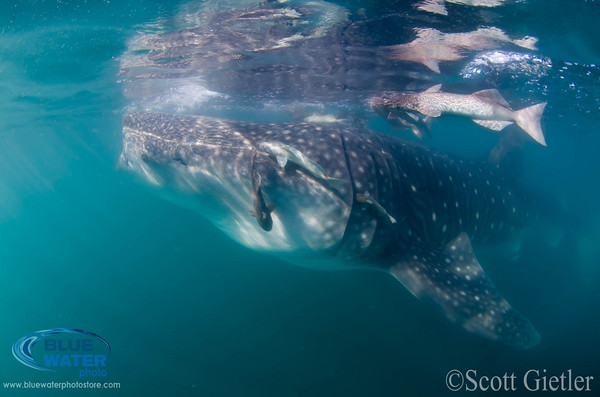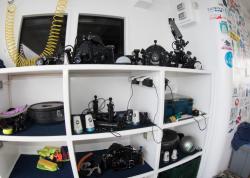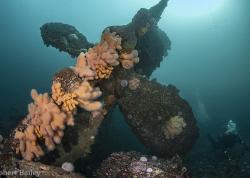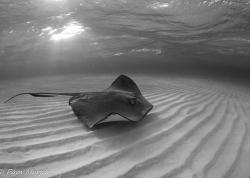Top 5 Big Animal Encounters

What are the best big animal encounters in the world? The sheer magnitude of life on this planet is astounding with an estimated 50%-80% of all life found in the ocean. As scuba divers, we spend lots of time underwater, but generally need to seek out photographs with the largest animals and fish on Earth. Diving lets us go on safari every time we dive, experiencing a little piece of the deep blue each time we get in the water.
Who wouldn’t want to capture that experience and share it? From mantas to whales, we have the same fascination with big animals under the sea that we do on land. Here are some of the best destinations to experience these magnificent creatures.
Swimming with Humpback Whales
Whales are by far the largest creatures on the planet, and who wouldn’t want to experience one up close? For humpbacks, your best option is Tonga, where there government issues a set number of permits a year allowing people to snorkel with and photograph the Southern Hemisphere Humpback Whale.
Whales in Tonga
Tonga, an independent kingdom made up of 176 islands, is about a 90-minute flight from Fiji. The humpbacks head to Tonga from their feeding grounds in Antarctica to mate and give birth. Most of the whale excursion tours are launched from the Vavau Island Group, one of the three major groups Tonga is divided into.

A snorkeler shoots photos of a humpback whale in Tonga.
Travelers can opt for shared open boats or private charters. Photographers should choose the private, more expensive, option as you’ll have more time in the water with smaller groups and the captain of the boat will find cooperating whales and keep the boat in the best spot for good lighting. Here is great info on diving Tonga.
See also: Best Places to Swim with Whales: Top 3
Dominican Republic
The Dominican Republic is another option that has a lot of options available for swimming with these majestic animals. Read our article on swimming with humpback whales in the Dominican.

A humpback whale dances with a swimmer in the Dominican Republic. Photo: Wilfried Niedermayr
Snorkeling with Whale Sharks
Whales may be the biggest creatures out there, but when it comes to fish, there isn’t anything larger than a Whale Shark. Not a predator by any means, these gentle giants graze on plankton and can occasionally be found near the surface where we can interact with them.
Isla Mujeres, Mexico
As swimming with whale sharks is a huge attraction, there are many places that market as being good destinations to see and swim with them. We have three favorite spots that we like to target. Top amongst them is Isla Mujeres, Mexico, where massive numbers of them congregate in the summer. This location is near Cancun. The advantage of Isla Mujeres is the ultra-clear water that will allow to get some great shots. The disadvantage is the crowds - there can be many, many boats on the water. Read our Isla Mujeres dive adventure story.

Whale shark in Isla Mujeres, photo by Stanley Bysshe
Sea of Cortez, Baja
Other great options include La Paz, Mexico and the Bay of Los Angeles in the northern Sea of Cortez. There are usually many whale sharks swimming in shallow bays feeding on plankton, and although visibility isn't great, you can get many excellent photos over a couple day period in either place.
Another location where they congregate is Cenderawasih Bay, in West Papau, where they are fed by fishermen. Oslob, Cebu in the Philippines is also gaining popularity as a spot where whale sharks are fed.
A general rule of them with any of these spots is to leave the scuba gear at home. Snorkeling is the method most encounters will force you into, which is probably fine as you wouldn’t be able to keep up with them anyhow on scuba. Just make sure you've got a great pair of snorkel fins to be in with a chance of keeping up!

A whale shark feeds in the Sea of Cortez.
Diving with Mantas
Kona, Hawaii
Likely the most unique creature on this list, manta rays are also the most graceful of the bunch and the easiest to encounter. What else could you hope for but year-round access and a location that offers guaranteed encounters? Enter the famous Kona feeding dive in Hawaii, where divers sit around a “campfire” (a large light) on the bottom of the ocean and allow the light to attract large amounts of plankton, which in turn attract the mantas. The Kona experience isn’t exactly a natural encounter but it is virtually guaranteed that you’ll see these unique creatures up close and personal. Read our guide to diving Kona for Mantas.

A Manta flies over the reef in Kona.
If you’d like a more natural encounter, head to Raja Ampat in Indonesia, which has a famous cleaning station called Manta Sandy that regularly attracts mantas. While nothing is guaranteed in the wild, your chances of an encounter are good. Bali and Yap also have similar natural encounter locations.
Baa Atoll in the Maldives should also be mentioned, as it is a well-known host to a large gathering of mantas between May and July. It should be noted, however, that the timing can fluctuate and the idea of a large gathering of mantas has turned experience into a bit of a zoo. Stick to Kona or a well known cleaning station for best encounters.

Mantas circle divers during the famous Kona Manta night dive.
Socorro Island and Bali
Socorro Island has amazing Manta Ray experiences year round, in addition to sharks and the possibility of dolphins and humpbacks. A socorro island trip is sure to produce some great Manta Ray shots, and many other big animals. Read our Socorro Island guide.
Likewise, Nusa Penida island in Bali has a couple Manta Ray cleaning stations that attract large numbers of huge manta rays.
Yap, near Palau in Micronesia, has some well-known Manta Ray cleaning stations that are great for manta shots, and you can also usually see mantas in the German Channel in Palau.

A Manta Ray swims overhead in Bali.
Playful Sea Lions
Whales, sharks and mantas are all interesting to observe and take photos of underwater, but there’s nothing more interesting and playful than a dolphin or sea lion encounter. Just as curious of us as we are of them, sea lions remind me of playing with your dog in the park. Their agility in the water gives them the confidence to get up close with divers, and they certainly make any dive experience a fun one.

Sea Lions play during a dive in La Paz.
La Paz, Mexico
The number one destination for experiencing sea lions has got to be La Paz, Mexico. It is easy to get to, has clear, warm water, and is host to large quantities of sea lions. Anacapa or Santa Barbara islands in Southern California and the Northern Sea of Cortez are other destinations where you have a good chance of playing in the water with these guys. Read our La Paz guide.

A Sea Lion barks at the camera in La Paz.
Getting Close to Sharks
Sharks are likely the most misunderstood marine animal in today's culture. Avoided by everyone except divers, it is hard to include them on this list because the sheer diversity of shark species makes it hard to pin down any one place for one type of encounter. Instead, we have picked a few different types of encounters we feel represents some of the best shark experiences a diver can seek out.
Tiger Beach, Bahamas
Looking for an up close and personal experience? Head out to Tiger Beach in the Bahamas where you can dive cage-free with Caribbean tiger and lemon sharks. These trips are often set up with in a two-dive combo where the first dive is bait free, for a more “natural” experience, and the second dive uses bait to bring the sharks in very close. Read our Tiger beach diving adventure story.
.jpg)
Tiger Shark at the world famous Tiger Beach. Photo: Steve Rosenberg
Beqa Lagoon, Fiji
Another good spot that uses feeding techniques to bring in sharks is Fiji. You will encounter up to eight species of shark on these trips, including Silvertips, Tawny Nurse Sharks, Bull sharks and a variety of reef sharks. If you’re interested in this, seek out the Shark Reef Marine Reserve, Fiji. Read our Shark Destination guide.

Blacktip reef sharks in Beqa Lagoon. Photo Mark Strickland with Beqa Adventure Divers.

Shark diving at Beqa Lagoon, Fiji.
Cocos Island
Lastly, for a truly natural experience, meaning no feeding or baiting, the best are to head is to Cocos Island of the shore of Costa Rica. Being an uninhabited island, there isn’t much on land to attract anyone out here. What’s under the water, however, is a major draw for scuba divers. Mantas, sailfish, dolphins, turtles and, of course, many species of shark, often in large numbers, can all be found out there. Scalloped Hammerhead Sharks are the headliner, and can be found schooling if you’re there at the right time. Cocos Island has the advantage of having cleaning stations for Hammerhead sharks, which allows for some great underwater photos. Read out guide to diving Cocos Island.
Socorro Island and the Galapagos islands also have their fair share of sharks, along with other large marine life. Also, Rangiroa, Tahiti, French Polynesia at the Tiputa pass can be an excellent shark dive, with Silvertip sharks and several other species commonly sighted.

Hammerhead shark at Cocos Island, Costa Rica. Photo: Randy Harwood

Schooling Hammerhead sharks at Cocos Island, Costa Rica. Photo: Edwar Herreno
Get out and dive!
There you have it - the best areas around the world for diving with some of the biggest animals in the ocean. While nothing is ever guaranteed, if you head out to these spots you can be fairly certain you’ll have an experience worth capturing and sharing. Let us know if you’ve been to any of these spots in the past and feel free to share an image or two you might have taken out there.
2019 Update: Check out our sister website Bluewater Travel's comparison piece on three of the world's best big animal diving destinations: Socorro vs Cocos vs Galapagos
Top 5 Big Animal Dives
-
Tonga for Humpback Whales
-
Isla Mujeres or Sea of Cortez - Whale Sharks
-
Kona, Hawaii - Mantas
-
La Paz, Mexico - Sea Lions
-
Cocos, Beqa Lagoon, or Tiger Beach for sharks
Further Reading
Swimming with Humpback Whales
Diving Cocos Island with Sharks
Join Us for a Workshop in the Sea of Cortez
Check out these useful resources from our sister websites Bluewater Travel and Bluewater Photo
RECOMMENDED ARTICLES
SUPPORT THE UNDERWATER PHOTOGRAPHY GUIDE:
The Best Service & Prices on u/w Photo Gear
 Visit Bluewater Photo & Video for all your underwater photography and video gear. Click, or call the team at (310) 633-5052 for expert advice!
Visit Bluewater Photo & Video for all your underwater photography and video gear. Click, or call the team at (310) 633-5052 for expert advice!
The Best Pricing, Service & Expert Advice to Book your Dive Trips
 Bluewater Travel is your full-service scuba travel agency. Let our expert advisers plan and book your next dive vacation. Run by divers, for divers.
Bluewater Travel is your full-service scuba travel agency. Let our expert advisers plan and book your next dive vacation. Run by divers, for divers.

































